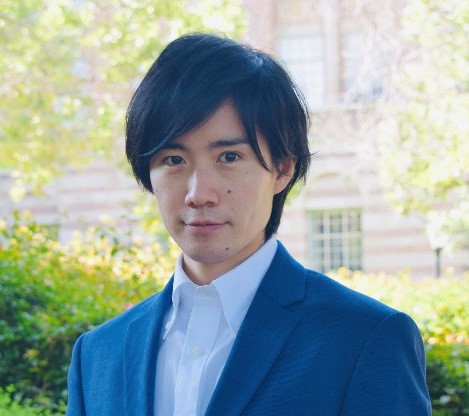Announcement of the 1st Waseda IARBD seminar “Exploring the role of ‘star brain cells’ astrocytes in health and disease”
Jun Nagai, Team Leader, RIKEN CBS
The first seminar of the Waseda IARBD seminar series was a lecture by Jun Nagai Team Leader of Center of Brain Science, RIKEN, Japan. The lecture title was “Exploring the role of ‘star brain cells’ astrocytes in health and disease”.
We look forward to your participation.
| Date : | 15 February, 2022 |
| Time : | 17:00-18:00 (Japan Standard Time) |
| Venue : | Webinar, Zoom (You will know the link after your registration.) |
| Lecturer : | Dr. Jun Nagai Team Leader, RIKEN CBS Visiting Associate Professor, Waseda University |
| Title : | Exploring the role of “star brain cells” astrocytes in health and disease” |
| Registration Fee : | Free |
| Language : | English |
| Registration : | Please register in the following link: https://forms.gle/vwvrvKvdJfQMUMLR6 |
| Closing Date : | 13 February, 2022 |
| Contact : | IARBD-Office: IARBD-office@list.waseda.jp |
Biography
Dr. Jun Nagai received a PhD in Science from Waseda University in 2015 September under supervision of Professor Toshio Ohshima, focusing on axon guidance molecules in brain development injury models with analyses of mutant mice. His postdoctoral work, with Dr. Baljit Khakh at UCLA, centered roles of astrocytes, a type of brain cells, at the levels of genes, cells, circuits and behavior. He started running his laboratory at RIKEN Center for Brain Science as a Team Leader from 2020 November. Dr. Nagai is a Visiting Associate Professor at Waseda University from April 2021 and engaged in research and educational activities.
The CV can be found in https://junnagai-lab.com/.
Abstract
If you take an adult human brain, it can be placed on your hand and weighs just about 1.5 kg. This small organ regulates how we sense, think, move and adapt within the ever-changing world. An open question in brain science is exactly how multiple cell types in the tissue communicate each other to make the brain functions. This seminar will focus on a type of brain cells, astrocytes. The star-shaped cells have been discovered over century ago but understudied for a long time partly due to a lack of experimental tools. I will report the latest insights revealed by using improved, multiple integrated approaches, including calcium imaging, electrophysiology, opto/pharmaco-genetics, mouse behavioral tests and RNA-seq. First, I will describe new mechanisms of bi-directional neuron-astrocyte communications that lead to altered animal behavior [1]. Second, I will present how astrocytes are molecularly flexible and how we can use the molecular signaling information for phenotypic benefits in neurodegenerative disease mouse models, e.g. Huntington’s disease [2]. Third, I will report a validation work for a new effective, specific and consequential attenuation tool of astrocyte signaling in vivo [3]. Taken together, our findings show that signaling from astrocytes to neurons is sufficient per se to alter neuronal activity and animal behavior in health and disease.
References
[1] Nagai J et al., Hyperactivity with disrupted attention by activation of an astrocyte synaptogenic cue. Cell (2019).
[2] 1Yu X and 1Nagai J et al., Context-specific striatal astrocyte molecular responses are phenotypically exploitable. Neuron (2020). 1Co-first
[3] Nagai J et al., Specific and behaviorally consequential astrocyte Gq GPCR signaling attenuation in vivo with ibARK. Neuron (2021).
Organized by the Institute for Advanced Research of Bioscience Dynamics (IARBD)

